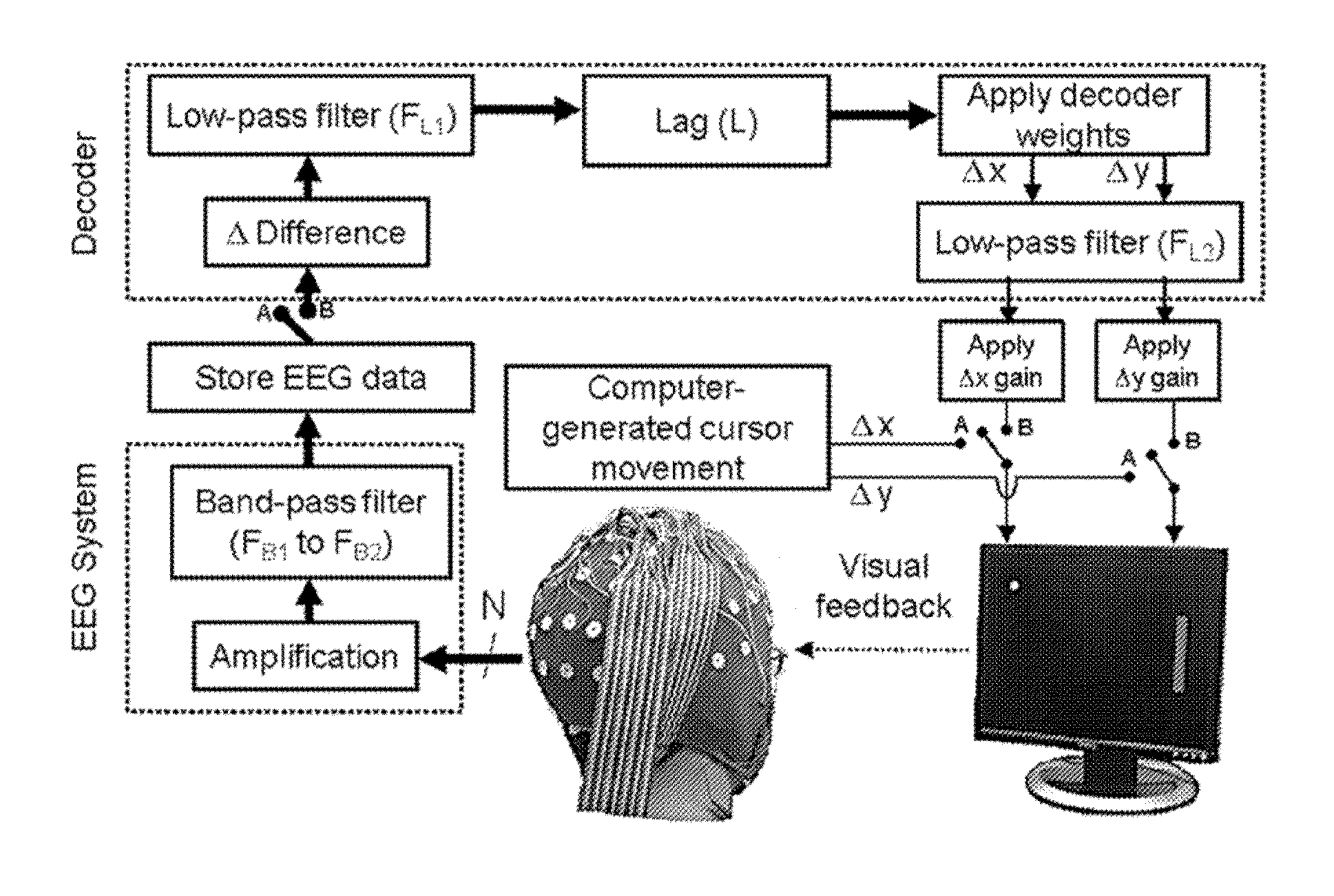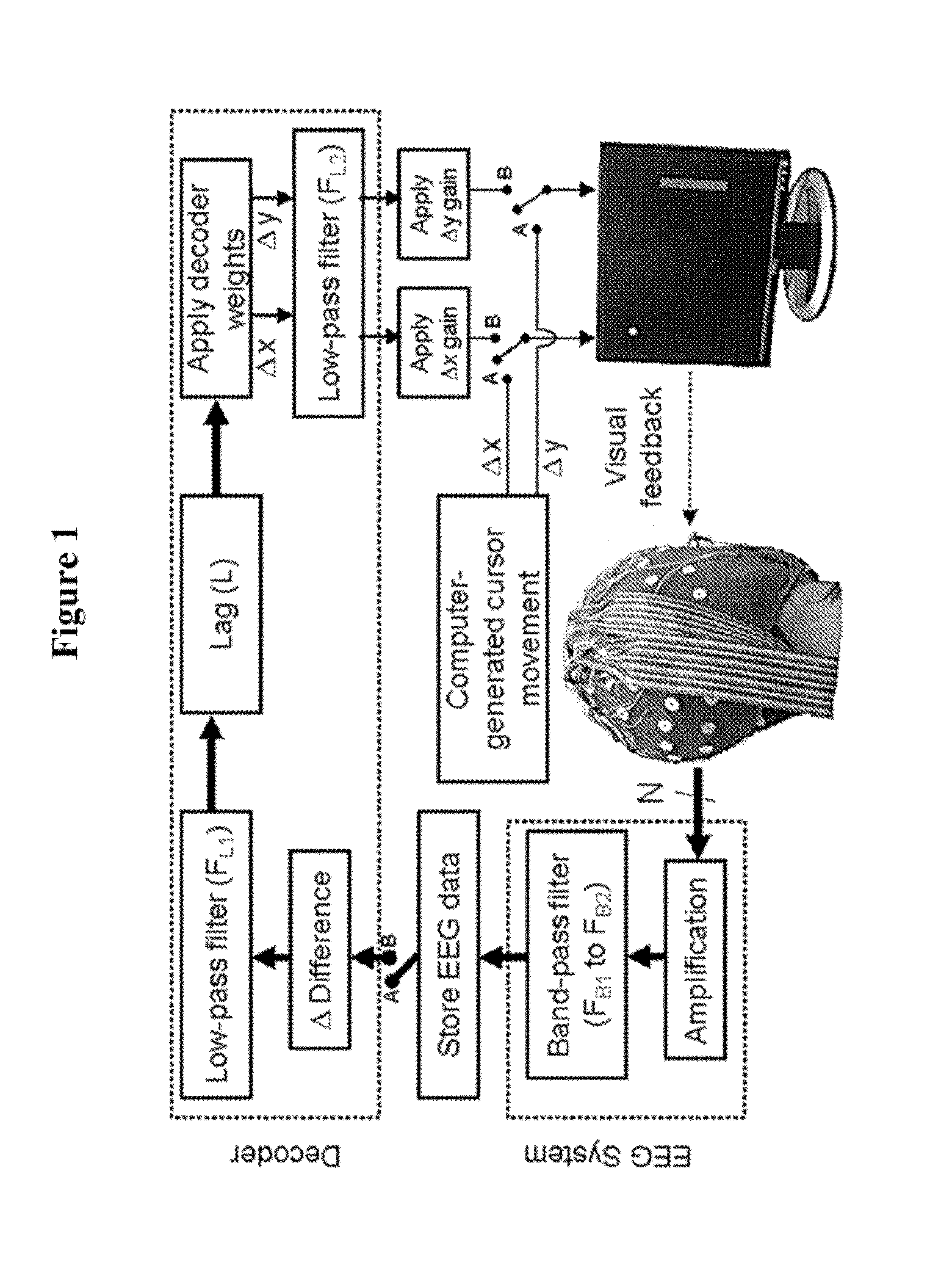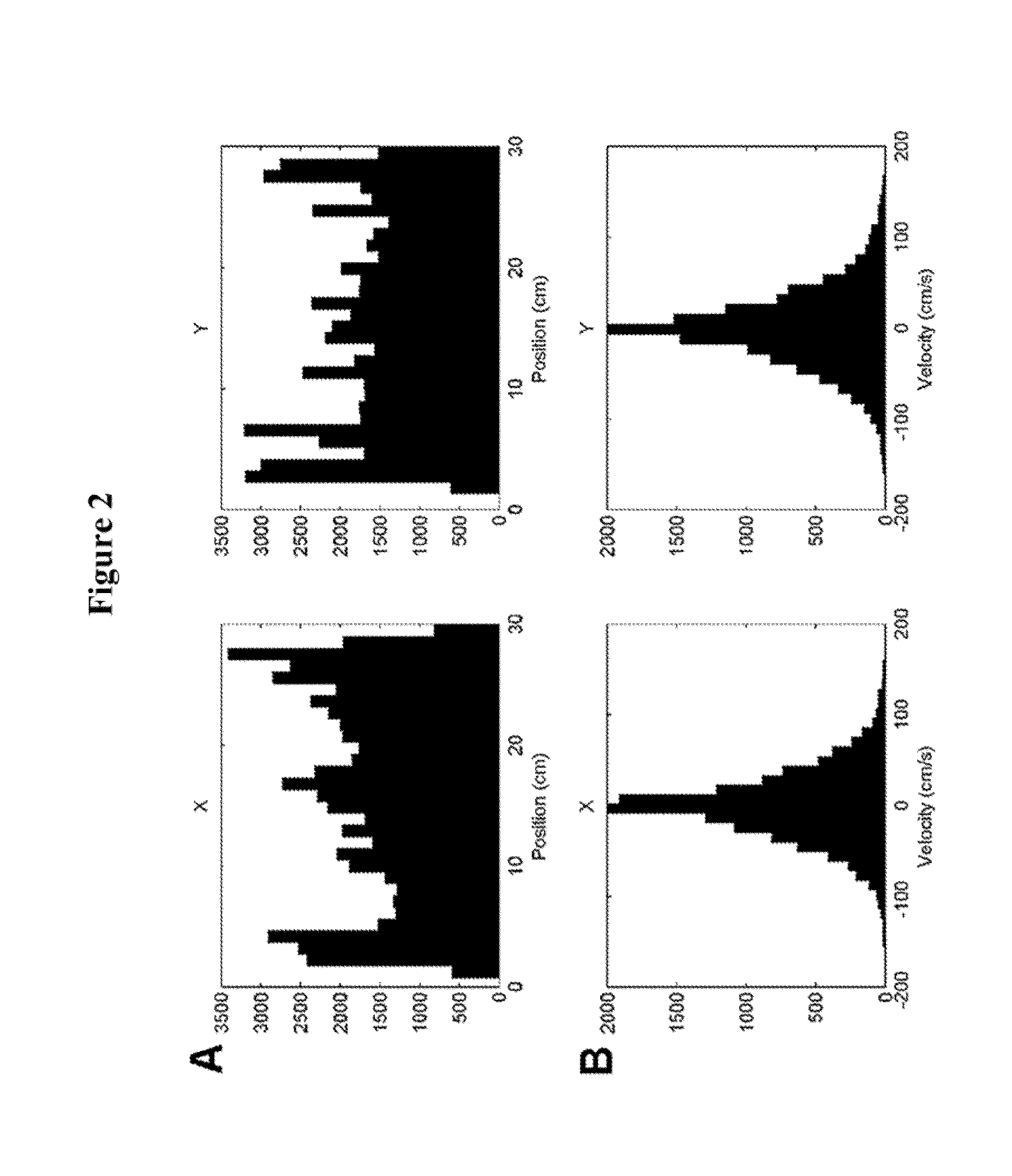Time Domain-Based Methods for Noninvasive Brain-Machine Interfaces
a brain-machine interface and time domain technology, applied in the field of brain computer interface systems, can solve the problems of long training time required by users to achieve satisfactory performance, inherent risks of surgery and gradual degradation of signal integrity, and the design strategy of controlling such prostheses, etc., to achieve the effect of reducing training tim
- Summary
- Abstract
- Description
- Claims
- Application Information
AI Technical Summary
Benefits of technology
Problems solved by technology
Method used
Image
Examples
example 1
Methods and Materials
[0071]Five healthy, right-handed subjects performed a three-phase task: calibration, practice, and target acquisition. None of the subjects had previously participated in a BCI study. In all phases, the subjects EEG signals were acquired while they sat upright in a chair with hands resting in their laps at arm's length away from a computer monitor that displayed a workspace of dimensions 30×30 cm and a cursor of diameter 1.5 cm (0.20% of workspace). The subjects were instructed to remain still and relax their muscles to reduce the introduction of artifacts into the EEG recordings.
[0072]A diagram of data processing flow for the EEG-based BCI system according to the first embodiment is illustrated in FIG. 1. When the switches are in position A, the system is in an observation / calibration mode. In the observation / calibration mode, a subject observes a replay of a pilot subject's cursor movements on a computer screen while data from a plurality N (e.g. 34) of EEG se...
example 2
Methods and Materials
[0127]Referring to FIG. 10, five healthy, right-handed subjects sat upright in a chair and executed self-initiated, center-out reaches to self selected push-button targets near eye level. The subjects were instructed to attempt to make uniformly distributed random selections of the eight targets without counting. Subjects were further instructed to fixate on an LED on the center target throughout data collection and to only blink when their hand was resting at the center target. To ensure the minimization of eye movements, a researcher monitored the subjects' eyes during data collection, and the correlation between electroocular activity and hand kinematics was analyzed off-line (available at www.jneurosci.org as supplemental material). For each subject, the experiment concluded after each target was acquired at least 10 times.
[0128]A 64-sensor cap for sensing EEG signals (e.g., such as available from Electro-Cap International Inc. of Eaton, Ohio) was placed on ...
example 3
Methods and Materials
[0159]Five healthy, right-handed subjects sat upright in a chair and executed self-initiated, center-out grasping tasks. In particular, the subjects were seated behind a table with five objects (calculator, CD, espresso cup, zipper and a beer mug) arranged in front of them in a semicircle with an approximate radius of 30 cm. The initial position of the hand was palm down and flat on the table at the center of the semicircle. On the presentation of an auditory “go” cue (100 ms tone at 2 kHz), the subjects were instructed to select, reach out and grasp any of the five objects. Subjects kept a steady grasp on the objects until an auditory “stop” cue (200 ms tone at 1 kHz) was presented 5 s after the “go” cue, on hearing which they returned their hand to the resting initial position.
[0160]The time until the presentation of the “go” cue for the next trial was Gaussian distributed with a mean of 7 s and standard deviation of 1 s. Five blocks of 12 minutes each were re...
PUM
 Login to View More
Login to View More Abstract
Description
Claims
Application Information
 Login to View More
Login to View More - R&D
- Intellectual Property
- Life Sciences
- Materials
- Tech Scout
- Unparalleled Data Quality
- Higher Quality Content
- 60% Fewer Hallucinations
Browse by: Latest US Patents, China's latest patents, Technical Efficacy Thesaurus, Application Domain, Technology Topic, Popular Technical Reports.
© 2025 PatSnap. All rights reserved.Legal|Privacy policy|Modern Slavery Act Transparency Statement|Sitemap|About US| Contact US: help@patsnap.com



